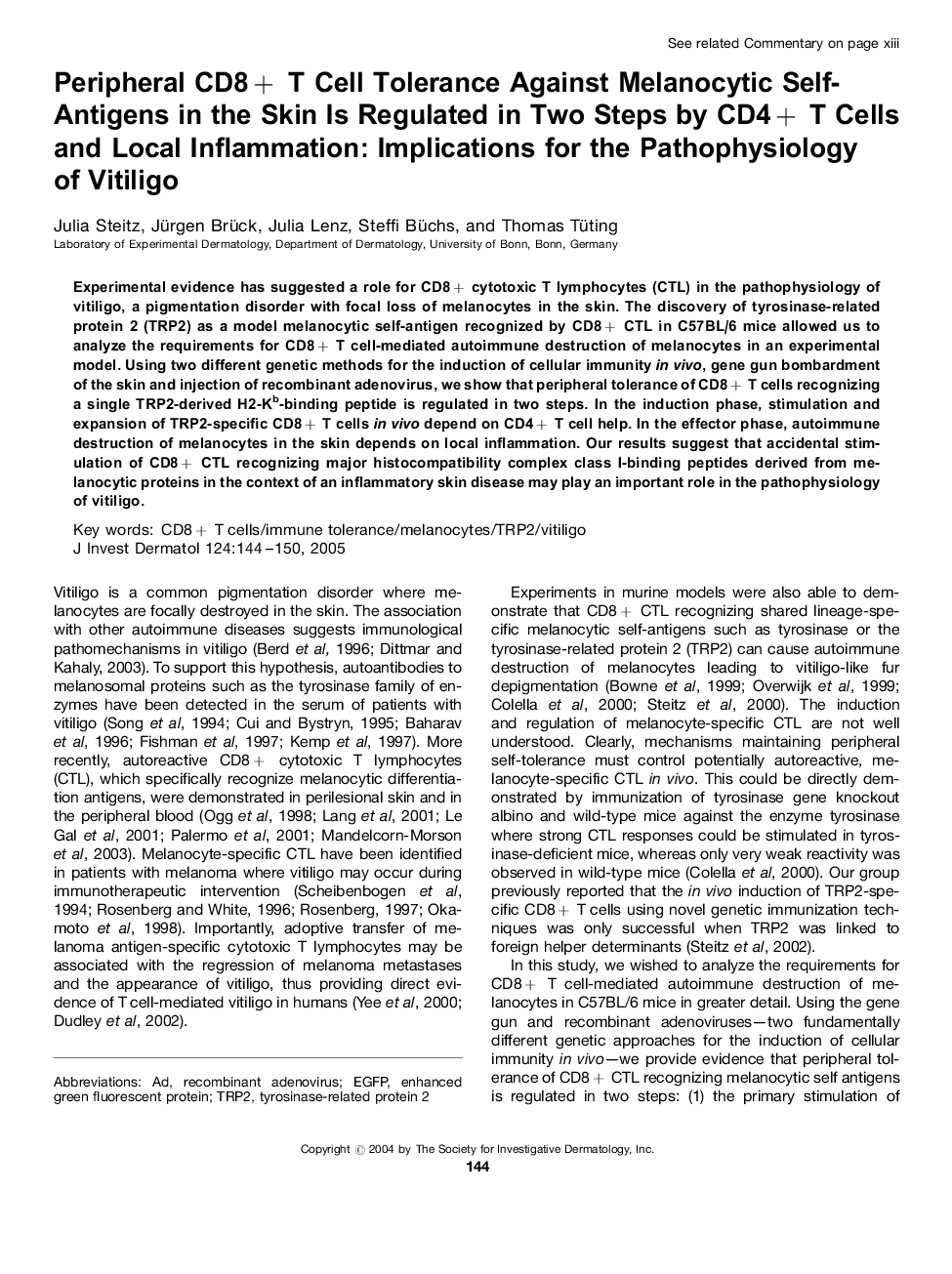| Article ID | Journal | Published Year | Pages | File Type |
|---|---|---|---|---|
| 9231319 | Journal of Investigative Dermatology | 2005 | 7 Pages |
Abstract
Experimental evidence has suggested a role for CD8+ cytotoxic T lymphocytes (CTL) in the pathophysiology of vitiligo, a pigmentation disorder with focal loss of melanocytes in the skin. The discovery of tyrosinase-related protein 2 (TRP2) as a model melanocytic self-antigen recognized by CD8+ CTL in C57BL/6 mice allowed us to analyze the requirements for CD8+ T cell-mediated autoimmune destruction of melanocytes in an experimental model. Using two different genetic methods for the induction of cellular immunity in vivo, gene gun bombardment of the skin and injection of recombinant adenovirus, we show that peripheral tolerance of CD8+ T cells recognizing a single TRP2-derived H2-Kb-binding peptide is regulated in two steps. In the induction phase, stimulation and expansion of TRP2-specific CD8+ T cells in vivo depend on CD4+ T cell help. In the effector phase, autoimmune destruction of melanocytes in the skin depends on local inflammation. Our results suggest that accidental stimulation of CD8+ CTL recognizing major histocompatibility complex class I-binding peptides derived from melanocytic proteins in the context of an inflammatory skin disease may play an important role in the pathophysiology of vitiligo.
Related Topics
Health Sciences
Medicine and Dentistry
Dermatology
Authors
Julia Steitz, Jürgen Brück, Julia Lenz, Steffi Büchs, Thomas Tüting,
